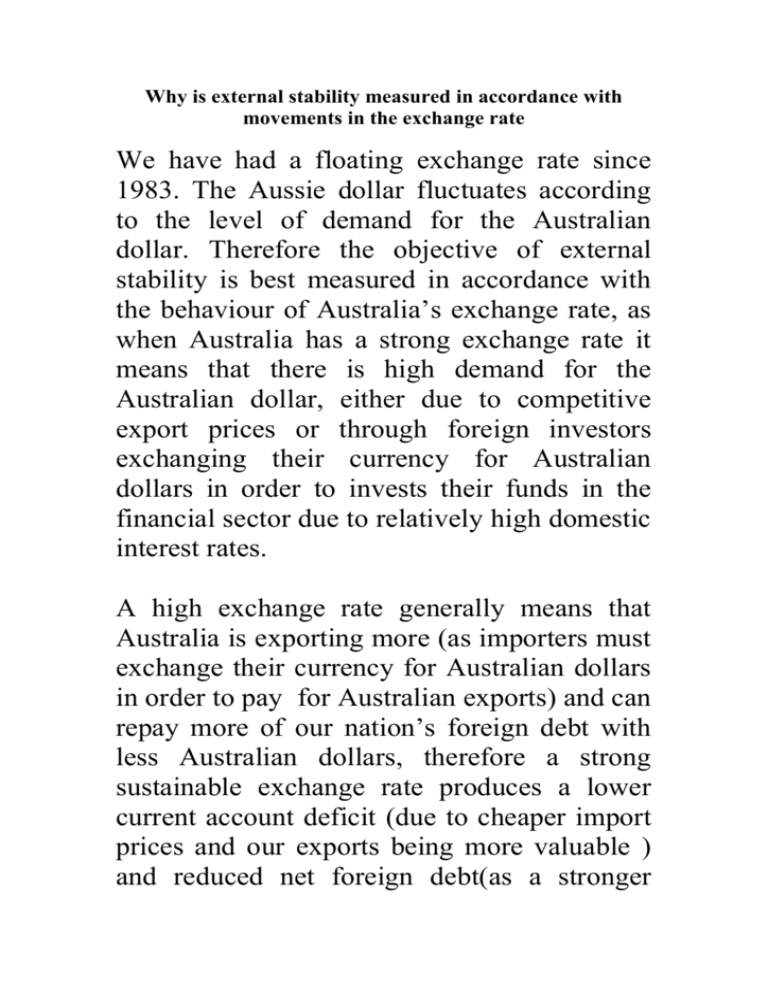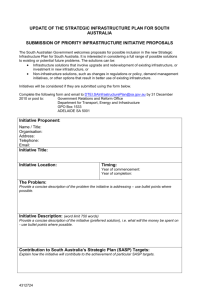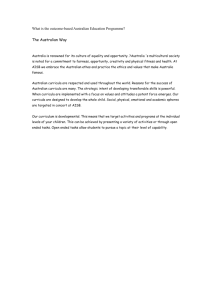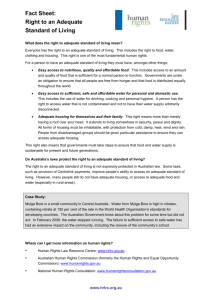Why is external stability measured in accordance with
advertisement

Why is external stability measured in accordance with movements in the exchange rate We have had a floating exchange rate since 1983. The Aussie dollar fluctuates according to the level of demand for the Australian dollar. Therefore the objective of external stability is best measured in accordance with the behaviour of Australia’s exchange rate, as when Australia has a strong exchange rate it means that there is high demand for the Australian dollar, either due to competitive export prices or through foreign investors exchanging their currency for Australian dollars in order to invests their funds in the financial sector due to relatively high domestic interest rates. A high exchange rate generally means that Australia is exporting more (as importers must exchange their currency for Australian dollars in order to pay for Australian exports) and can repay more of our nation’s foreign debt with less Australian dollars, therefore a strong sustainable exchange rate produces a lower current account deficit (due to cheaper import prices and our exports being more valuable ) and reduced net foreign debt(as a stronger exchange rate allows us to repay more our past external debts and effectively meet debts that arise) which assists in meeting the criteria required for the objective of external stability.











